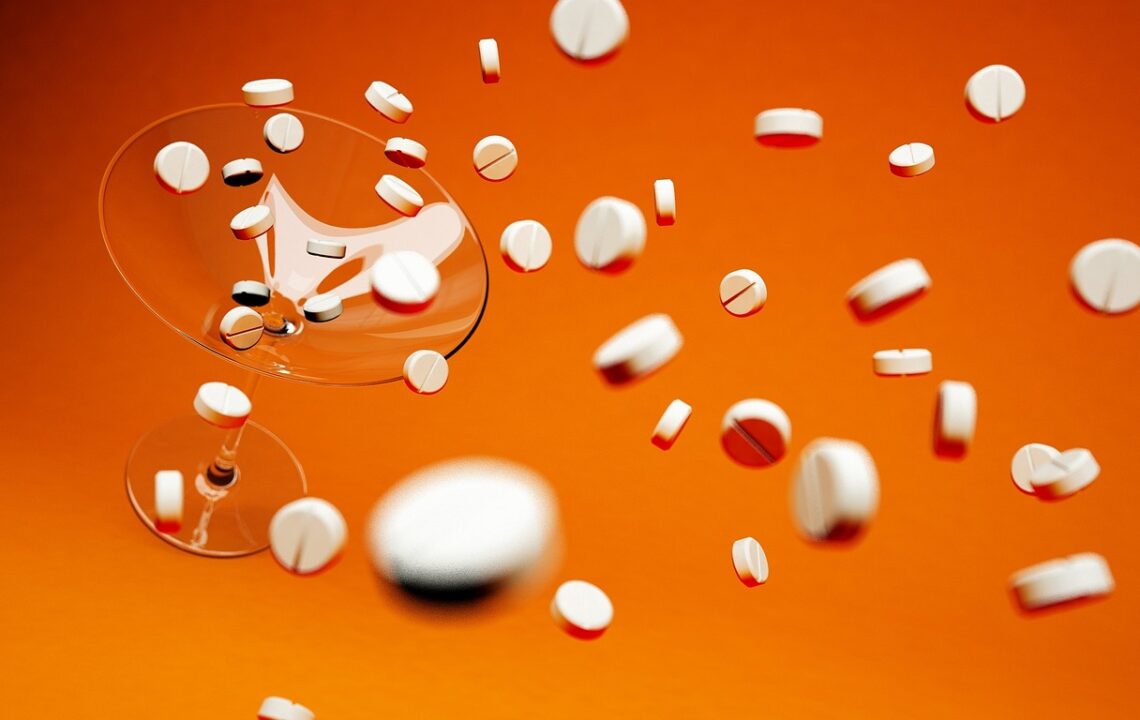Vitamin D, often known as the “sunshine vitamin,” is a hot topic in the health world, and for a good reason! It’s essential for bone health, immune function, and overall well-being. But, like the sun itself, too much of a good thing can leave you burned—metaphorically saying. Overdosing of vitamin D can lead to a rather sunny predicament known as vitamin D toxicity.
You might think, “Wait, isn’t vitamin D good for me?” Absolutely, but only in the right amounts. Shockingly, a study revealed that between 2000 and 2014, there was a 25-fold increase in vitamin D toxicity cases in the United States.
This surge is linked to the increasing popularity of supplements, over-fortification of foods, and, of course, the occasional enthusiastic sunbather who decides to worship the sun a little too hard.
Now, you have to be curious about it, right? So, here we’ll shine light (pun intended) on what vitamin D toxicity is, how it happens, what symptoms to watch out for, and—most importantly—how to flush that extra D out of your system.
Vitamin D Toxicity: How Does This Happen?
Vitamin D toxicity, also known as hypervitaminosis D, occurs when there is an excessive accumulation of vitamin D in the body. But how does one end up with too much of this vital nutrient?
The primary sources of vitamin D are sunlight, food, and supplements. While it’s nearly impossible to get to toxic levels from sun exposure alone (your body has a self-regulation system that stops you from overdosing just by basking in the sun), the other two sources can quickly tip the scales.
The biggest reason is over-the-counter supplements. Unlike with water-soluble vitamins, which your body can easily flush out, vitamin D is fat-soluble, meaning it gets stored in the body. So, those high-dose vitamin D pills can linger in your system, causing a slow build-up over time if taken excessively.
The second reason is the surge in popularity of fortified foods—think milk, cereals, and orange juice—it’s easier than ever to consume more vitamin D than intended. While fortification aims to prevent deficiencies, it can backfire if you’re already getting enough vitamin D from other sources.
In a nutshell, vitamin D toxicity is a classic case of too much of a good thing turning bad.
What Happens If You Get Too Much Vitamin D in Your System?
While vitamin D is essential for calcium absorption and bone health, too much of it can disturb the delicate balance of calcium in the body, leading to potential health issues.
Hypercalcemia:
The primary consequence of excessive vitamin D intake is hypercalcemia. Vitamin D facilitates the absorption of calcium from the gastrointestinal tract. When vitamin D levels are too high, it causes an abnormal increase in calcium absorption, resulting in elevated serum calcium levels. This disrupts normal physiological functions, as calcium is important for bone health, and proper functioning of muscles, nerves, and the heart.
Kidney Problems:
The kidneys are responsible for filtering blood and removing waste products and excess substances. When there’s too much calcium in the blood, the kidneys have to work harder to filter it out, which can lead to a range of problems, including:
- Kidney Stones: High calcium levels can lead to the formation of kidney stones, which are painful and can block the urinary tract.
- Nephrocalcinosis: This condition involves the accumulation of calcium salts in the kidneys, potentially leading to kidney damage and reduced kidney function.
- Kidney Failure: In severe cases, the kidneys can lose their ability to function properly, leading to acute kidney failure.
Bone Pain and Fragility:
Although vitamin D is essential for bone mineralization, too much of it can cause bones to lose calcium, making them weak and more susceptible to fractures. This condition occurs because the excess vitamin D leads to the removal of calcium from the bones to maintain high blood calcium levels.
Gastrointestinal Symptoms:
Hypercalcemia can cause gastrointestinal issues such as nausea, vomiting, and constipation. These symptoms arise because high calcium levels can affect the smooth muscle contractions in the gastrointestinal tract, slowing down digestion and leading to discomfort.
Neurological Effects:
As mentioned previously, hypercalcemia can significantly affect the nervous system. The nervous system is highly sensitive to changes in electrolyte levels, and elevated calcium can disrupt neurotransmission, leading to a wide range of neurological symptoms, including confusion, fatigue, lethargy, and in severe cases, psychosis.
Symptoms of Vitamin D Toxicity
Vitamin D toxicity symptoms can range from mild to severe, depending on how much vitamin D you’ve accumulated in your system and howlong it’s been there. Here are some common symptoms to watch out for:
- Nausea and Vomiting: These are often the first signs, as excess calcium can irritate the stomach.
- Weakness and Fatigue: Feeling unusually tired or weak could be a red flag. This is due to the imbalance in electrolytes caused by high calcium levels.
- Frequent Urination and Thirst: As your kidneys work overtime to filter out excess calcium, you may find yourself running to the bathroom more often and feeling constantly thirsty.
- Loss of Appetite: High levels of calcium can also affect your digestive system, leading to a decreased appetite.
- High Blood Pressure: The calcification of arteries due to excess calcium can lead to increased blood pressure.
How To Flush Vitamin D Out Of Your System?
Here are some advanced methods and medical interventions that can effectively help manage and reduce the effects of vitamin D toxicity:
Cease Vitamin D and Calcium Intake
The first and most important step is to immediately discontinue all vitamin D and calcium supplements. This stops further accumulation and prevents the worsening of hypercalcemia. Avoid foods and beverages that are rich in vitamin D or high in calcium, such as milk, orange juice, and certain cereals.
Pharmacological Treatments
Bisphosphonates: These drugs are often used to manage hypercalcemia by inhibiting the resorption of bone, thereby lowering the levels of calcium released into the bloodstream. They are especially useful in cases where vitamin D toxicity has led to increased bone turnover.
Corticosteroids: Administered under medical supervision, corticosteroids can reduce intestinal calcium absorption and decrease vitamin D production in granulomatous diseases like sarcoidosis. They are particularly effective in patients whose vitamin D toxicity is linked to such conditions.
Calcitonin: This hormone can be used as a rapid, but short-term, treatment to lower blood calcium levels. It works by inhibiting bone resorption and increasing calcium excretion through the kidneys.
Cinacalcet: For patients with parathyroid disorders contributing to hypercalcemia, cinacalcet can help lower calcium levels by increasing the sensitivity of calcium-sensing receptors on parathyroid glands, thus reducing parathyroid hormone (PTH) secretion.
Intravenous Hydration and Diuretics
Intravenous (IV) hydration is more effective than oral hydration alone, as it rapidly restores fluid balance and helps flush out excess calcium through the urine. This is often combined with diuretics like furosemide (Lasix), which increase urine output and promote the excretion of calcium. This treatment can be managed carefully to avoid dehydration and electrolyte imbalances.
Dietary Adjustments
While reducing calcium-rich foods is a common approach, a more nuanced dietary adjustment involves:
Limiting High-Oxalate Foods: Oxalates can bind with calcium, potentially reducing hypercalcemia symptoms. Foods high in oxalates include spinach, beets, and nuts. However, this should be done under medical supervision to avoid other complications, such as kidney stones.
Increasing Fiber Intake: Dietary fiber can help in the excretion of calcium through feces. Foods rich in fiber, such as whole grains, fruits, and vegetables, should be incorporated into the diet.
Monitoring and Follow-Up
Continuous monitoring of blood calcium and vitamin D levels is essential. Regular follow-up visits to a healthcare provider ensure that the treatment is working and that calcium levels are returning to normal. In addition to biochemical monitoring, assessing symptoms and overall health is also important.
Addressing Underlying Conditions
In some cases, underlying medical conditions such as hyperparathyroidism, granulomatous diseases, or certain cancers can exacerbate or cause vitamin D toxicity. Identifying and treating these conditions can prevent recurrence and help in managing symptoms. This may involve surgical interventions, specific medications, or other targeted therapies.
Also Read:
Parting Words
And there you have it people — a full-on sun-drenched crash course on vitamin D toxicity. It’s one of those rare but serious conditions that remind us that even the things that are good for us in moderation can turn harmful when taken to the extreme. It can lead to a range of health issues, from kidney problems to cognitive impairment.
If you suspect you have too much vitamin D in your system, don’t panic. The first step is to stop taking any supplements and consult a healthcare professional. With the right treatment and lifestyle adjustments, you can safely lower your vitamin D levels and prevent any long term damage.
Whether you’re a supplement enthusiast or a sun worshipper, it’s essential to find that golden middle ground where you get just the right amount of vitamin D for optimal health. So, what’s the takeaway? Like the best things in life, sunshine, and vitamins are best enjoyed in moderation.
A little sunshine can brighten your day, but too much can leave you burnt.





